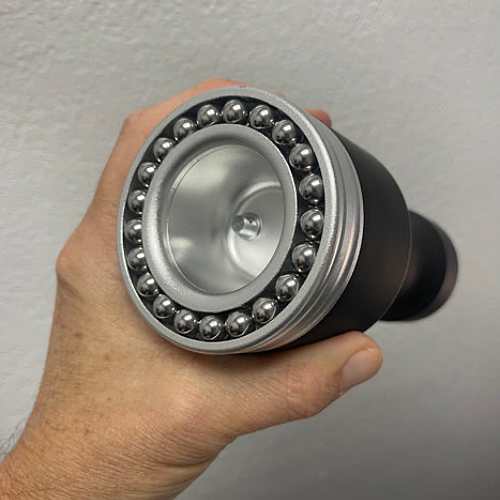
Cupping is a type of alternative therapy that involves placing cups on the skin to create suction. This suction is thought to improve the flow of energy in the body and facilitate healing.
Cupping Therapy is one of the mainstream elements of a TCM practice in addition to Herbs, acupuncture and Tuina (acupressure massage)
In Traditional Chinese Medicine, Cupping therapy is proponents believe that suction helps facilitate the flow of “qi” in the body. Qi is a Chinese word meaning life force.
Cupping increases blood circulation to the area where the cups are placed. This may relieve muscle tension, which can improve overall blood flow and promote cell repair. It may also help form new connective tissues and create new blood vessels in the tissue, the effectiveness of cupping therapy benefit has been scientifically proven by many studies.
What is the benefit of Cupping Therapy that has been proven by science?
According to many studies, the effectiveness of cupping therapy has been proven [1,2,3,4,5,6]
- Increased blood flow for delivery of nutrients to the muscles, ligaments, cartilage, and bone
- Remove toxins by increasing the flow of lymph in the lymphatic system.
- Reduce tightness and tension from Stress, Anxiety & Depression.
- Releasing the “feel good” hormones called endorphins.
- Reducing inflammation.
- Boosting cellular immunity.
- Decreasing uric acid & cholesterol .
- Increasing the level of immune products, such as interferon and tumor necrotizing factor
- Changing the skin’s biomechanical properties
Different types of Cupping Device
Suction was primarily created through the use of heat. Cups were originally heated with fire and then applied to the skin. As they cooled, the cups drew the skin inside.
Modern cupping is often performed using bell-shaped glass cups. They may also be made of plastic or silicone.
There are four main categories of cupping performed today:
- Dry cupping: a suction-only method
- Wet/bleeding cupping: may involve both suction and controlled medicinal bleeding
- Sliding cupping: involves moving suctioned cups around the body after applying oil to massage the desired area
- Flash cupping: involves quick, repeated suction and release of cups on an area of the body
Invention of the Flying Fish Roller Cupping Device by Michael Phelps
The unique products that are part of the Flying Fish Cupping collection have evolved over a nine-year journey to find the highest quality devices that deliver the best results.
Keenan Robinson, Phelps' longtime strength-and-conditioning coach introduced him to cupping in 2014, just before the pan-Pacific championships. The previous year, Phelps' coach Bob Bowman held a training camp at altitude, and several Chinese swimmers attended. Michael was intrigued with the cupping they used for conditioning and felt the immediate impact on his training and recovery.
These benefits are backed by scientific study and literal centuries of traditional medicinal application.
Michael started working with Dr. Jing Liu; the founder of Eastern Medicine Center in Scottsdale Arizona in 2017. Since then, they have experimented with and refined dozens of treatment options to produce the Flying Fish Roller Cupping Device that is available to you now.
References
- Hou, Xiao, et al. "Using laser Doppler flowmetry with wavelet analysis to study skin blood flow regulations after cupping therapy."Skin Research and Technology 3 (2021): 393-399.
- Gok, Sumeyye, et al. "Is it possible to remove heavy metals from the body by wet cupping therapy (Al-hijamah)?." (2016).
- Biehl, Madeline Marie.The Therapeutic Effects Of Dry Cupping On Iliotibial Band Tightness. Illinois State University, 2017.
- Subadi, Imam, et al. "Pain relief with wet cupping therapy in rats is mediated by heat shock protein 70 and ss-endorphin."Iranian Journal of Medical Sciences 4 (2017): 384.
- Abbasi, Nooshin, and Rezvan Najafi. "Cupping Therapy as an Anti-inflammation Therapy and Immunomodulator in Cancer Patients."Journal of Gastrointestinal Cancer 1 (2023): 3-5.
- Ghods, Roshanak, Nasrin Sayfouri, and Mohammad Hossein Ayati. "Anatomical features of the interscapular area where wet cupping therapy is done and its possible relation to acupuncture meridians."Journal of acupuncture and meridian studies 6 (2016): 290-296.
- Sutriyono, Sutriyono, Muhammad Rodham Robbina, and Meksianis Zadrak Ndii. "The effects of wet cupping therapy in blood pressure, glucose, uric acid and total cholesterol levels."Biology, Medicine, & Natural Product Chemistry 2 (2019): 33-36.
- hdavi, Mohammad Reza Vaez, et al. "Evaluation of the effects of traditional cupping on the biochemical, hematological and immunological factors of human venous blood."A compendium of essays on alternative therapy Croatia: InTech 6 (2012): 67-88.
- Edwards, Christopher, and Ronald Marks. "Evaluation of biomechanical properties of human skin."Clinics in dermatology 4 (1995): 375-380.
